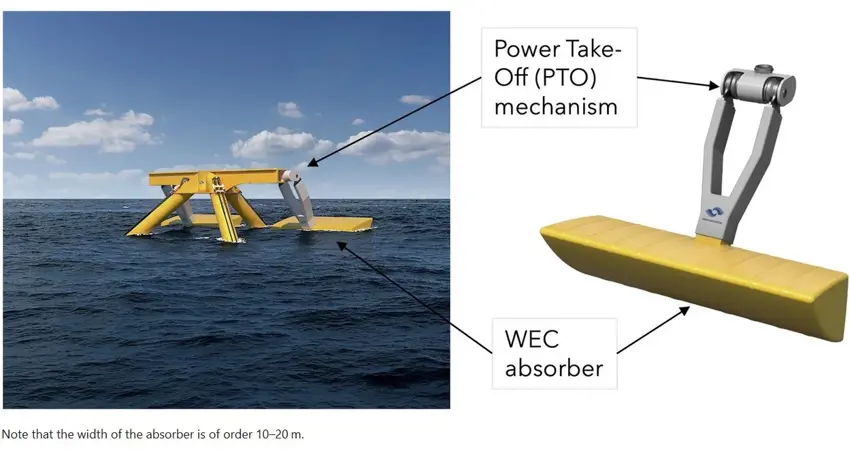11 Jul 2025
Optimising wave energy design for lower cost and higher reliability
New study published in Nature Portfolio’s Communications Engineering reveals how device geometry shapes performance and cost in wave energy systems

Fig. 1: A top-hinged wave energy converter (WEC), courtesy of Marine Power Systems
A new study led by researchers at the Department of Engineering Science, in collaboration with Marine Power Systems Ltd (MPS), presents a breakthrough in how we approach wave energy design.
Published in Nature Portfolio’s Communications Engineering, the study explores how geometry optimisation can unlock more efficient, lower-cost wave energy converters by rethinking the balance between power output and structural demands.
The study centres on a top-hinged wave energy converter, a practical and versatile design that offers several engineering advantages. Its absorber can be lifted out of the sea during storms, improving durability and survivability in extreme conditions. The power take-off (PTO) system is positioned above water, which avoids the need for complex submerged seals and simplifies maintenance. Moreover, the device can be mounted on existing offshore infrastructure, such as wind platforms, making it attractive for hybrid renewable installations.
Using a multi-objective optimisation framework, the researchers identified design geometries that reduce mechanical load by up to 50% while maintaining 70–90% of peak power output. These optimised configurations also performed reliably across realistic sea states, validated using data from the EMEC test site. Crucially, by applying far-field wave theory, the team was able to explain the underlying physics, revealing how wave radiation patterns influence the balance between power extraction and structural stress, and why specific shapes prove more efficient.
Lead researcher Dr Emma Edwards, Career Development Fellow, said “One of the things I liked the most about this study is that the objectives were co-designed with our industrial partners – so as well as developing our understanding of wave energy physics, we were also able to address a key industrial challenge.”
The findings could help advance wave energy as a viable, scalable component of the global renewable energy mix, offering reliability without sacrificing power.
Read the full paper: The effect of device geometry on the performance of a wave energy converter




